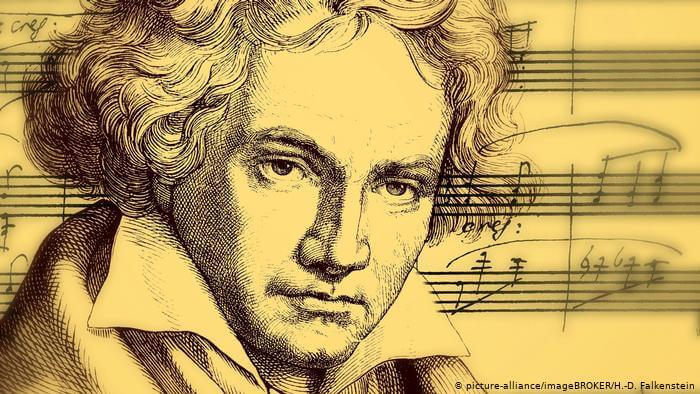Beethoven’s Cello Sonatas: A Journey Through Life

Years ago cellist Steven Isserlis set out on a quest, a quest to discover how performing all five Beethoven sonatas in sequence would work. He first asked himself what Beethoven would have heard as he composed them. How would it sound? How would it feel to be accompanied by a fortepiano? Mr. Isserlis began to work with classical pianist (and fortepianist) Robert Levin in Boston to produce the most accurate musical balance. And balance is crucial, he points out, because a modern grand piano does not have the same nuance of the fortepiano.[1]
Mr. Isserlis also discovered the exact work of Beethoven scholar Jonathan Del Mar. For the past twenty years as a music editor, Mr. Del Mar had examined and compared Beethoven’s first printed scores, printed proof scores with handwritten notations, copyist scores for mistakes and corrections, later printed copies, anything the composer would have had control over.[2] The tiniest marks in a copy could be misinterpreted as a staccato mark or accent.
After completing his work with the nine symphonies, Mr. Del Mar uncovered more discrepancies in the original scores of the cello sonatas. Mr. Del Mar’s new urtext differed so much from the previous one of 1971 that there were more than thirty new markings per movement.[3] As if the music were still evolving, Mr. Isserlis studied the meaning of each slur and dot before performing and recording all five.
For Mr. Isserlis, performing Beethoven’s cello sonatas in sequence was a different experience from playing any one sonata separately. Altogether, the sonatas represented Beethoven’s three major creative periods. Thus playing through them was like playing through the life and range of their creator.
The first sonatas, in F major and G minor, Op 5, were written when Beethoven was carving out a career for himself as a virtuoso pianist. In this time period, those who composed also performed, and those who performed frequently composed. In 1796, Beethoven was 25 years old, not yet suffering from deafness. In Berlin, Beethoven composed these pieces for the famous French cellist brothers Jean-Pierre and Jean-Louis Duport, who played at the court of King Friedrich II of Prussia.[4] As Friedrich was a cellist himself, Beethoven was delighted to perform the first two sonatas at court for him.
Listed as a Sonata for Piano and Violoncello, these sonatas are true concert pieces for piano, large in scale and full of effects. Although there are beautiful melody lines for the cello, the cello remains the accompaniment while the piano waxes eloquent.[5] Beethoven’s two early sonatas are still characteristic of the music of Haydn and Mozart in structure and content but are clearly designed for piano with cello.
The third sonata, however, inhabits a different creative world. The A major, Op 69, is listed as a Sonata for Violoncello and Piano. Beethoven worked on this sonata between 1806 and 1808, and by then, his deafness was acute. In his tragic letter known as the “Heiligenstadt Testament,” written in October 1802, Beethoven admitted that he had harboured thoughts of suicide. “It was only my art that held me back. Oh, it seemed to me impossible to leave the world until I had produced all that I felt was within me.” Yet the anguish he fought did not curtail his productivity or diminish his exuberance.
During this middle period, Beethoven composed his only violin concerto, piano trios, and the Fifth and Sixth Symphonies along with the third cello sonata. From the opening phrase where the cello begins alone, it is clear the cello is no longer obbligato. The Scherzo boasts accented rhythmic patterns with lightning speed while the last movement showcases the cello’s highest ranges. The entire sonata radiates serenity, humour, and joy. It is a thoroughly classical work, and its duality is clear—the A major is the first equal sonata for cello and piano.
Beethoven’s last creative period is said to have begun around 1815. Dating from that year, the two cello sonatas, Op 102, are commonly attributed as a farewell to cellist Joseph Linke, who had played with Beethoven for several years. Unlike their predecessors, these two sonatas are shorter and more concentrated while at the same time dramatic and experimental.
The fourth sonata in C major again begins with solo cello, but almost every note of the sonata is derived from the opening two bars. Soft and expressive, the Andante is followed by the fiery romp of the second movement before blending both styles in the third. Finally the D major sonata shows us both struggle and triumph. After the dramatic opening, Beethoven gives us for the first time in these sonatas a complete slow movement full of passion and pathos. After this prayerful movement aptly titled Adagio con molto sentimento d’affetto, he returns us to earth with an enjoyable fugue that conveys a sense of bold achievement.
As Mr. Isserlis writes, the final movement of the final sonata expresses a conquest over struggles that would have destroyed a lesser being. It is Beethoven himself, for he has “emerged in heroic triumph and we can hear him exulting as he bids farewell to the cello sonata.”
*****
Watch and listen to Steven Isserlis perform Beethoven’s Cello Sonata Number 2 in G minor HERE.
Watch and listen to Mstislav Rostropovich perform Beethoven’s last two cello sonatas here: the fourth and fifth.
Here is a Spotify playlist of all five of Beethoven’s Cello Sonatas, performed on period instruments by Anner Bylsma and Jos van Immerseel (Spotify subscription required):




